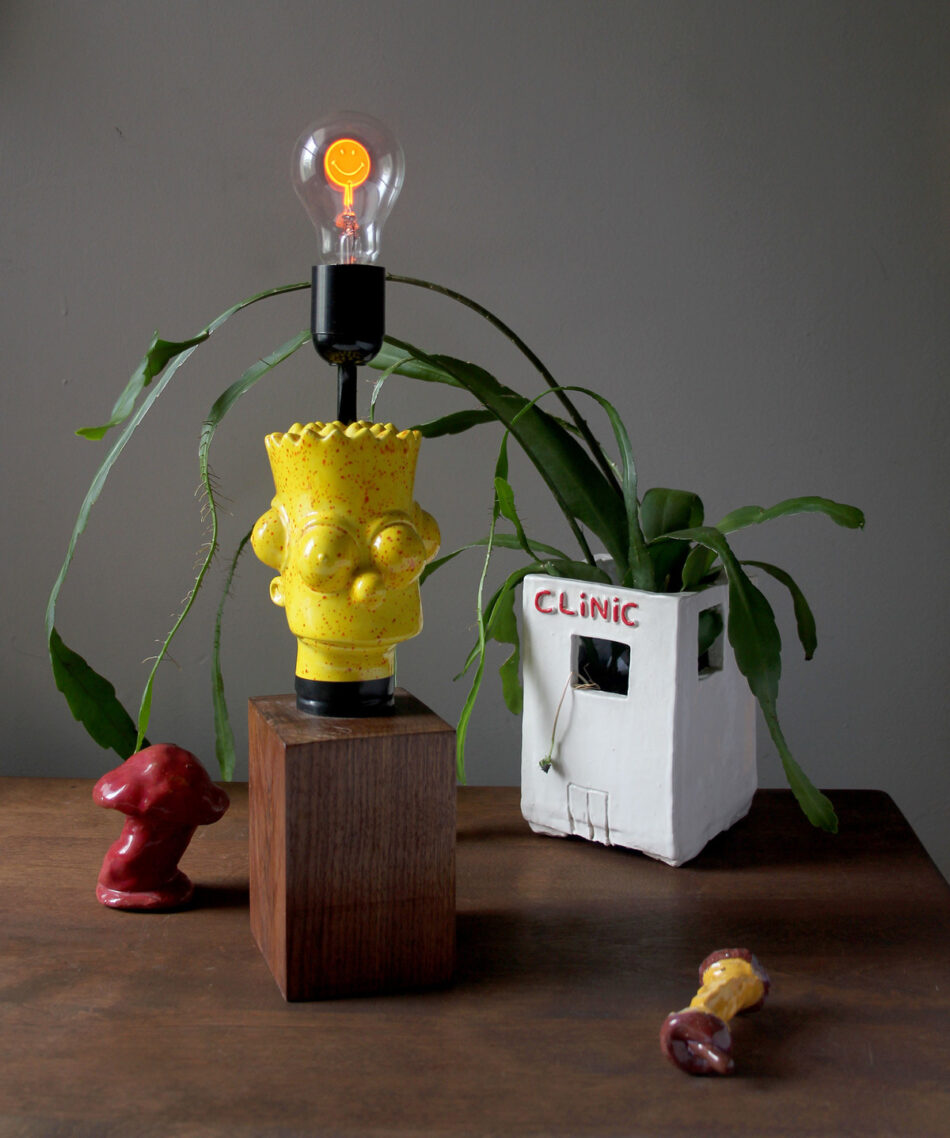A Theory of Everything
Kang: Abortions for all.
[crowd boos]
Kang: Very well, no abortions for anyone.
[crowd boos]
Kang: Hmm … Abortions for some, miniature American flags for others.
[crowd cheers and waves miniature flags]
— The Simpsons, “Treehouse of Horror VII” (1996)
Writing about The Simpsons is akin to writing about the cosmos. Only a Steven Hawking-type brain could trace the infinite strands of The Simpsons universe (and its impact). At the center is a nuclear family whose members have transcended household-name status to assume metonymic proportions: Homer, lovable if callous buffoon; Marge, loyal, goodhearted stay-at-home mom; Bart, mischievous id; Lisa, child saxophonist and permanent outsider; and Maggie, resourceful sucker of pacifier, somehow always more jaded and cool than the rest. Dozens if not hundreds of peripheral characters living in the fictional town of Springfield surround the family—Apu, Moe, Ned Flanders, Mr. Burns, Smithers, Krusty the Clown, and more, all too wonderful for words.
I have been an intermittent and at times devoted Simpsons fan since it first debuted as a one-minute short on The Tracey Ullman Show in 1987. During the show’s run, so much has changed, even as the ageless yellow characters remain static, always landing on the same couch. The fall of the Berlin Wall, the rise of the European Union, 9/11, and the legalization of gay marriage. Yet so much has also remained the same. The Clinton-Bush era has endured, aside from the past few years when Hillary Clinton stepped down as Secretary of State—although the coming presidential election seems likely to reinstate the dueling regimes.
And nothing right now seems as obdurate and adamantine as the ongoing conflict over women’s reproductive rights. Since Roe v. Wade upheld the legality of abortion in 1973, the far right has been trying to strip Planned Parenthood of its funding, in spite of the fact that, due to the 1977 Hyde Amendment, the organization cannot use federal or, in most cases, state taxes to provide abortions.
The Simpsons has addressed abortion politics many times, in one instance via a religious claymation show Gravey and Jobriath (spoofing the real-world Lutheran show Davey and Goliath) that Ned Flanders’s children are watching, in which Gravey constructs a pipe bomb “for to blow up Planned Parenthood!”
By coincidence, the foundations of both The Simpsons and Planned Parenthood were shaken this past summer. Rumor had it that Homer and Marge were getting divorced this season (the 27th). And conservative members of Congress rattled their swords at Planned Parenthood, demanding a withdrawal of federal funding from the organization, after undercover videos were released purporting to show an illegal transaction of fetal tissue. (Planned Parenthood officials claim the videos were heavily and misleadingly edited.) It’s understandable that animated characters wouldn’t age (although one wonders how long their irreplaceable voices will remain in the game). Yet how is it, after over 25 years, that so little has changed in the national thinking on reproductive rights?
As tragic as it is to imagine a world without The Simpsons, I could still live in that world. But a world without Planned Parenthood, without access to affordable and informed health care? Perhaps here fiction has something to teach us about reality. The abortion issue, like so many others, is at heart a publicity war with extremely media-savvy participants. Both sides know the power of words and images, and there seems to be a growing effort to counteract the stigmatization of women who have had abortions. (Just last fall, a character on the TV series Girls matter-of-factly gets an abortion.) Public acknowledgment of the procedure erodes its association with shame. The more of this, the better; otherwise a generation that took its right to choose for granted—and never knew a world without The Simpsons—may soon find itself desperately needing to change the channel.

Claire Barliant is a writer and curator based in Brooklyn.
